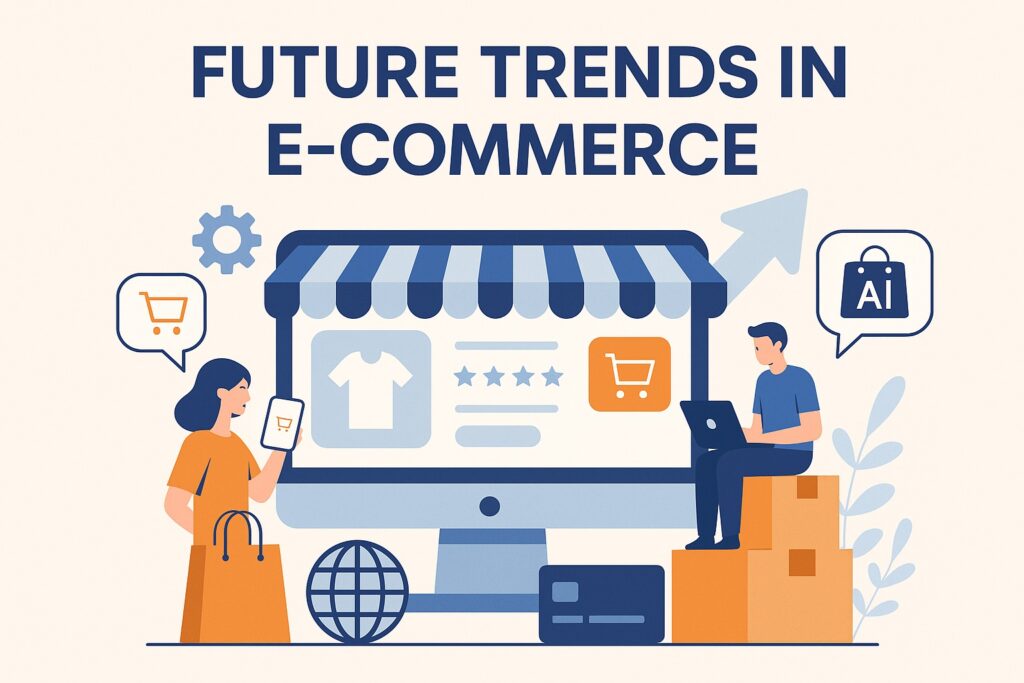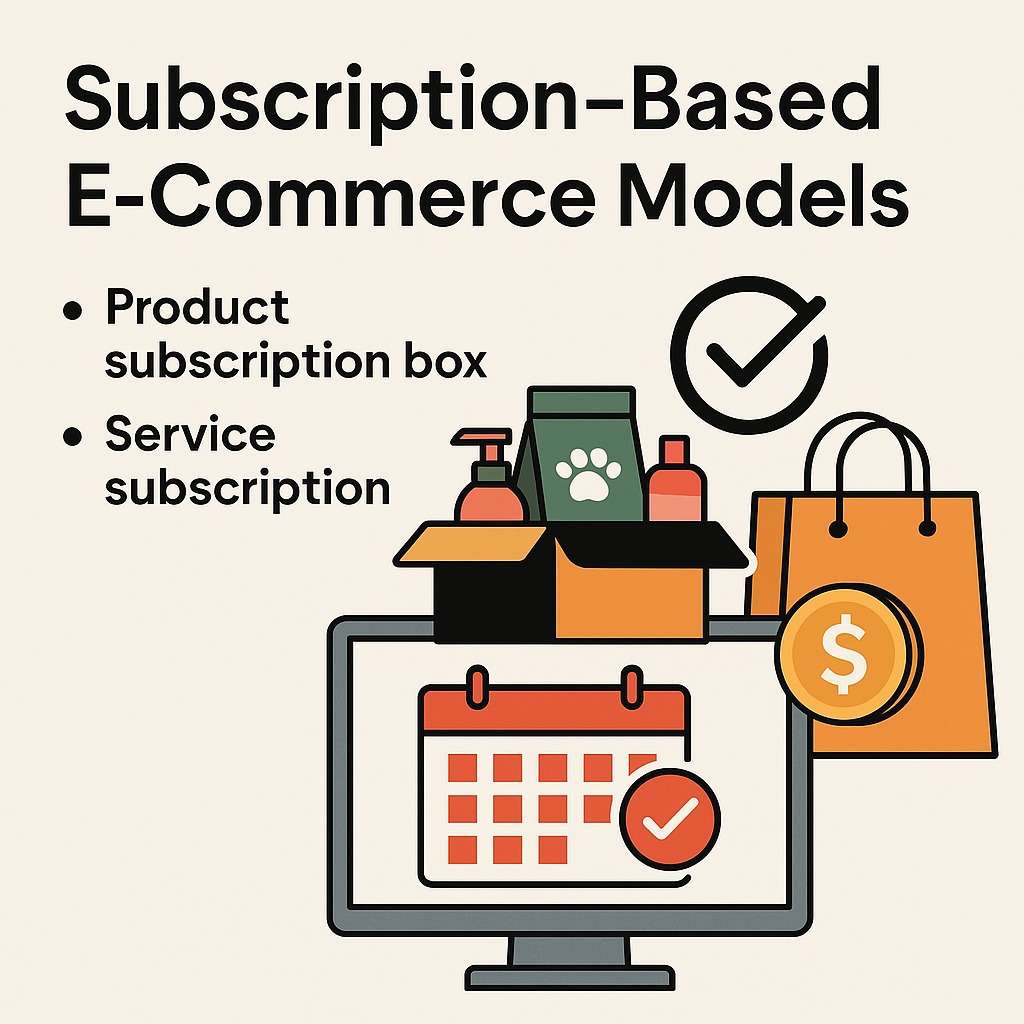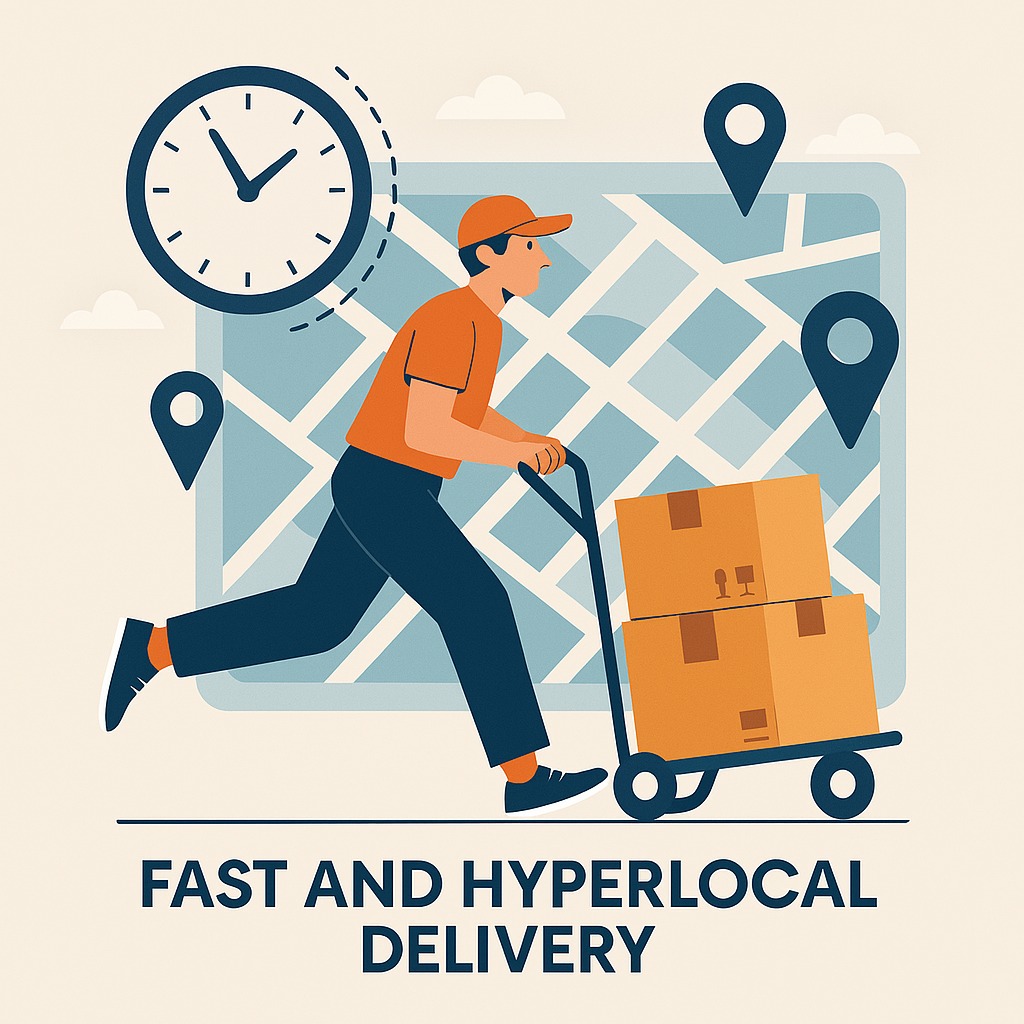The E-commerce industry bloom since the 1990s and with its continued evolvement alongside technology, the potential use cases make the horizon look more promising than ever. In 2023, the global e-commerce market size was $5.7 trillion and is expected to further increase owing to technology innovation, progressive consumer behaviors, and cutting-edge business frameworks. In this article we will shed light some future potential advancements that would impact e-business from the aspect of consumers, sellers, business developers, and entrepreneurs so they are primed well into the business horizon.
AI and Machine Learning Integration
Artificial Intelligence (AI) and machine learning have had a huge impact on e-commerce today. And not just that, their impact will only increase in the times to come.
With the help of these technologies, companies can:
Provide a personalized shopping experience for each customer
Make their work easier and faster
And most importantly — improve customer service
For example, when you search for something on a website, AI understands what your preferences are and shows you things accordingly. Machine learning learns on its own from repeated data and starts giving better suggestions over time. These technologies not only benefit customers, but also help businesses to do their work more intelligently.
Personalization of Shopping Experiences
Tools using artificial intelligence can evaluate the customer’s data which includes the customer’s online activities, buying habits, and preferences to provide tailored recommendations. This creates a uniquely customized shopping experience that increases the rate of successful sales transactions and improves customer satisfaction.
Example: Amazon
An epitome of the transformation in e-commerce because of AI and machine learning is readily observable in Amazon. The recommendation system employed by Amazon uses AI and contributes 35% to the company’s sales. This engine recommends products to the customers based on their previous searches, purchases, and even the products they’ve browsed.
Improved Customer Service with AI Chatbots
AI chatbots and virtual assistants are being utilized in resolving customer queries, addressing problems, and even in assisting customers throughout the purchasing journey. Their support enhances customer satisfaction while moderating business expenditures.
Example: H&M
As we all know how big a company H&M is. This company has also integrated AI chatboat on its platform allowing customers to get fashion advice and personalized recommendations in real-time, improving the overall shopping experience.
👉 ChatGPT vs. DeepSeek vs. Grok: A Detailed Comparison
AI-Driven Inventory Management
AI, or artificial intelligence, is not only useful in customer experience, but also in the internal operations of the business – especially in inventory management. What used to happen earlier? Shopkeepers or online stores had to keep stock by guessing. Sometimes things would arrive in excess and get spoiled, and sometimes the things needed would fall short.
What does AI do now?
AI looks at old data and estimates how much demand there might be for a particular thing at a given time. This allows companies to prepare in advance – neither less nor more – keep only as much stock as is needed.
Its benefits:
- Waste of stock is reduced
2. Important things are available on time
Customers are happy because they get the things they want and the business also saves money. That is, with the help of AI, inventory management has now become smarter and easier.
👉 Marriage, Money & Misuse of Laws : ATUL SUBHASH CASE
Voice Commerce
What is voice commerce?
Many people are now using voice-based devices like Amazon Echo or Google Home to make purchases. This is called voice commerce. It is estimated that by 2025, voice commerce will drive more than $40 billion in sales in the US.
How does voice commerce work ?
People can now:
place orders
track deliveries
and ask questions about products
With their voice, the shopping experience is easier, faster and hands-free. Smart speakers and voice assistants like Alexa and Google Assistant are a big factor in the growing popularity of voice commerce.
Example: Domino’s Pizza
Domino’s allows its customers to order pizza through Alexa and Google Assistant. Customers can repeat favorite orders or browse menus with their voice — all without touching the phone.
Increasing use of voice-activated devices Now companies need to write their product information in such a way that it is easily visible even in voice search. For this, the use of “natural language” and long keywords is necessary.

👉 Kunal Kamra: Jokes, Justice, and Controversy
Augmented Reality (AR) and Virtual Reality (VR)
What is AR and VR?
AR and VR technology are now allowing people to experience online shopping in a better way. These technologies give you a chance to see the product in the “real world”, without buying it.
Better product visualization
With the help of AR, customers can see how something will look in their home before buying it.
For example, a customer can see through the app how his new sofa will look in the living room.
Example: IKEA
IKEA’s “IKEA Place” app lets customers see how the furniture will look in their home. This reduces the fear of buying the wrong product and increases trust.
Virtual try-on
Now fashion and beauty companies are also using AR/VR, so that people can try clothes, jewelry or makeup virtually. This makes shopping more fun and also reduces the chances of getting the wrong product.
Example: Sephora Sephora’s “Virtual Artist” feature allows customers to try makeup virtually. This makes them fun and also eliminates the hassle of testing.
Social commerce and influencer marketing
What is social commerce?
Now people are viewing products on social media platforms like Facebook, Instagram and TikTok and are also buying from there. This process is called social commerce.
Shoppable posts and live streaming
Now on Instagram and TikTok, you can buy the product seen in a post by clicking directly.
Along with this, live shopping is also in trend, where brands show the product in live video and customers can buy it from there.
Example: Glossier
Glossier is a beauty brand that sells its products through great posts and influencers on Instagram. This makes their customers feel connected to the brand and also increases sales.
Effect of influencer marketing
When influencers, i.e. famous people on social media, promote a product, people trust it. This gives the brand new customers and also increases its recognition.
Example: Fashion Nova Fashion Nova is a popular fashion brand that works with many influencers on Instagram. Their promotions generate huge sales for the company.
Subscription-Based E-Commerce Models
What is a subscription model?
Now many businesses are adopting a model in which customers take a product or service every month or at a fixed time. This gives convenience to customers and continuous income to companies.
Types of subscriptions:
Product subscription box: In this, the customer gets curated items every month, such as beauty products, snacks, or pet food.
Service subscription: In this, customers pay every month for services like Netflix or online courses.
Example: Dollar Shave Club
This company started a subscription model of sending shaving kits every month. It was so successful that Unilever bought it for $1 billion.
Trend of digital subscription
Now companies like Netflix, Spotify and Adobe are also earning money from digital subscription. This earns the business every month and customers get continuous value.

Fast and hyper local delivery
People now want fast delivery
Services like Amazon Prime have increased everyone’s expectations. Customers now want same-day or next-day delivery. This is why companies are adopting fast and hyper local delivery models.
Fast delivery methods:
Partnerships with local courier companies
Testing drones and self-driving delivery vehicles
Making the supply chain smarter
Example: Walmart
Walmart has introduced features like “same day delivery” and “curbside pickup” in many cities. This helps customers get their orders quickly and conveniently.
Use of local warehouses Companies are now building local warehouses so that products can be stored nearby and delivered quickly.

Environmentally conscious and ethical e-commerce
Now customers want brands to take care of the environment. People now prefer brands that care about the environment and work honestly. Therefore, companies have to adopt green packaging, ethical products and clean supply chains.
Demand for eco-friendly products is increasing
Companies are now:
1. Using recycled materials
2. Reducing packaging
3. And creating long-life products
Example: Patagonia
Patagonia is a brand that uses recycled materials in its products and also offers repair services. This gives customers confidence that the brand really cares about the environment.
Green shipping and carbon offsetting Companies are now making their delivery systems eco-friendly as well. Logistics brands like ShipBob and UPS are running carbon offset programs so that deliveries cause less harm to the environment.
Conclusion
The times of e-commerce i.e. online shopping are changing very fast. This is because of new technology, new business methods and changing thinking of people. Now people have become smarter than before and they want easy, fast and personal shopping experience.
With the help of Artificial Intelligence (AI), it has become easier to show the products according to the choice of each customer. Now people have started buying things by voice command, such as “Alexa, I want to buy shoes.” Apart from this, with technologies like Augmented Reality (AR), you can now also see how the things will look in your house before buying them.
Also, people now like those companies that take care of the environment and use less things like plastic. That is, to be successful in e-commerce, just having a good product is not enough – the thinking and approach of the company also matters.
Only those companies that adopt these new trends will move ahead. Overall, if a company does not change with the times, it will be left behind. The world of e-commerce is changing every day, and the company that stays flexible and innovative — will win.
If you liked this article, please share it and let us know your suggestions so we can continue to improve.